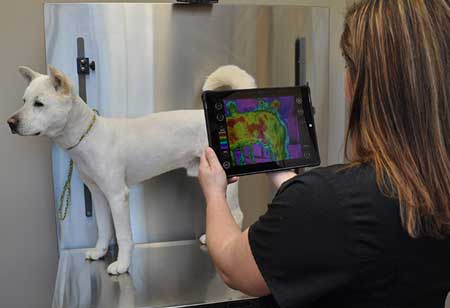Thank you for Subscribing to Healthcare Business Review Weekly Brief

Why Do Veterinarians need Thermal Camera?
Healthcare Business Review
Thermal cameras are powerful enough to determine injury in an animal without exploratory surgery.
Fremont, CA: Pet owners cannot rely on visual check-ups for their pets these days. Thermal cameras can eliminate the need for visual check-ups. Gone are the days when IR cameras were used for firefighting, and now the general application of thermography in the field of animal care is increasing. If veterinarians want to make a smart move, it would definitely take place by utilizing thermal imaging tools in their clinic that can cause a surge in the clinic’s efficiency.
The thermal camera allows scanning an animal body thoroughly to detect inflammation in critical areas. When applied to the animal body, veterinarians can check to the fullest extent. They can utilize thermal cameras to identify subclinical inflammation, areas having increased blood flow without outward pain. The method can help to derive numerous benefits when applied to small animals. When traditional diagnostic tools like X-rays and CT scans take more time, IR cameras can diagnose disease in a matter of minutes. It is a non-invasive method that let veterinarians diagnose animals in their comfortable position and from a distance. This technique eliminates the need for anesthesiologists that, in turn, eliminates the need for added costs.
Infrared imaging has been extensively utilized to check dental issues and injuries in aquatic animals. Similarly, it can be used by zookeepers to detect health issues without having direct contact with wild animals. Thus, the technique eliminates the need for exploratory surgery to detect the presence of health issues.
Even domestic animals benefit a lot from thermal imaging such that a rise in body temperature can be easily detected without having to touch the animal. Some powerful thermal cameras can even detect less than 5-degree centigrade that helps detect normal stress happening in an animal. Musculoskeletal abnormalities and osteoarthritis can be detected using thermal imaging. The ability to differentiate soft tissue and bone tissue makes the thermal camera a powerful diagnostic tool. Top of all, veterinarians can monitor the progress of treatment and vary the therapeutic procedure accordingly.
See Also :- Top Healthcare Solution Companies










